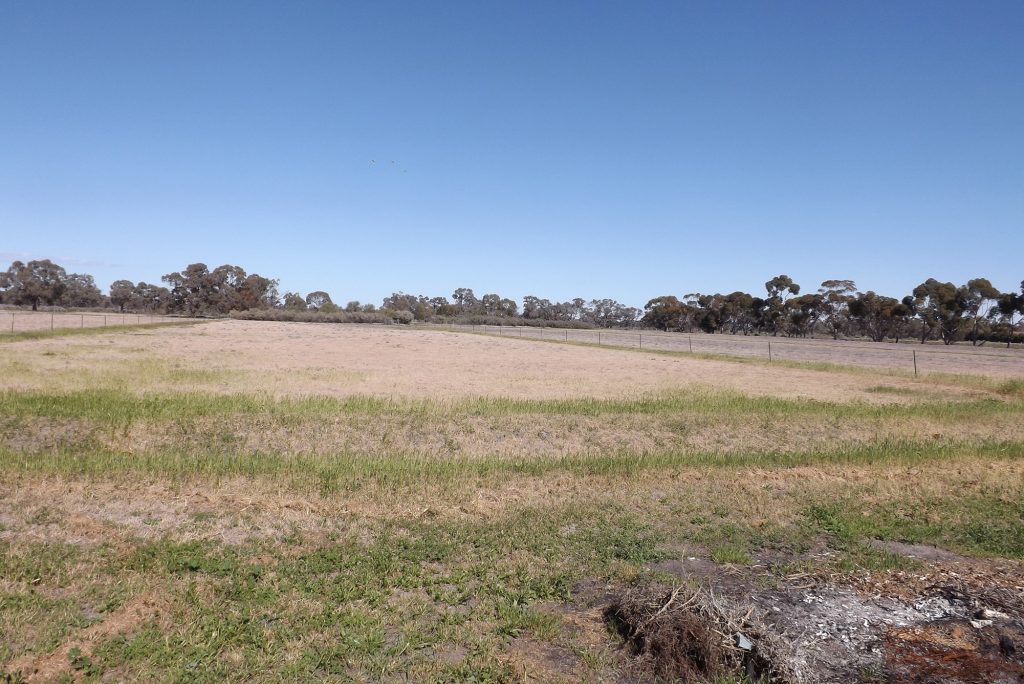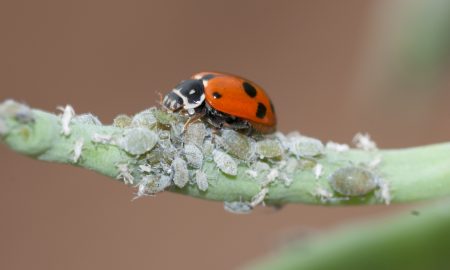Armyworms and ‘herringbone caterpillars’ continue to be found together in cereal crops, although armyworms are becoming more dominant.
Where have they been reported?
Since the last issue of PestFacts south-eastern, armyworms (Persectania ewingii or Persectania dyscrita) along with ‘herringbone caterpillars’ (Proteuxoa spp.) have been found in the Victorian Wimmera, Mallee and Northern Country, and in the NSW Riverina.
In the Wimmera (Rupanyup, Charlton and Warracknabeal areas), many barley and wheat crops planted into standing stubbles are experiencing light to moderate foliar damage by small and medium sized armyworms and in many cases, ‘herringbone caterpillars’ as well. The damage is now becoming more obvious although it was quite restricted only weeks ago (<1% of crop).
In the Mallee, lupins have also been attacked by ‘herringbone caterpillars’, and possibly armyworms as well.
cesar consultants have identified armyworms and ‘herringbone caterpillars’ causing light foliar damage to multiple cereal crops in the Wimmera, and peripheral damage to a wheat crop north of Benalla in the Victorian North East.
Irrigated grass pastures have been eaten out by armyworms in the Moulamien area of the NSW Riverina.

About these caterpillars
For a second consecutive year, armyworms are challenging cereal crops, through defoliation, particularly in western Victoria. This goes against the conventional wisdom that armyworms appear irregularly in seasonal surges and subsequently decline in pest status for a number of years.
For comprehensive information on armyworms, including their occurrence, lifecycle, behaviour and management strategies, go to armyworm within the PestNote series.
Click here for more information on identifying and managing ‘herringbone caterpillars’.
Our advice
Ensure correct identification of caterpillars before deciding on the most appropriate management action required.
The use of insecticides in early spring to control caterpillars may be necessary to protect crops from extreme defoliation. Be aware of the trade-off in eliminating the beneficials that, in many cases, control moderate aphid and caterpillar populations. The loss of beneficials can often induce earlier or secondary pest outbreaks.
Currently, most armyworm caterpillars are too large to pose a risk (from head lopping) to maturing barley later in the season. Wheat is rarely at risk of head lopping.
Our pest model predicts the current generation of armyworms is very likely to cease feeding and pupate well before most barley crops are susceptible to head lopping.
Armyworm caterpillars that are greater than 8-10 mm in length will stop feeding by 8th-20th of October. In most cases this is before the most vulnerable maturing stage of barley crops where large caterpillars can chew through the stem below the head.
Acknowledgements
Sources of field reports
Brad Bennett – Consultant, AGRIVision Consultants (Victorian Mallee)
Ben Cordes – Agronomist, Tylers Hardware & Rural Supplies (Victorian Wimmera)
Chris Lucas – Biosecurity Officer, Local Land Services (NSW Riverina)
Luke Maher – Agronomy consultant, AGRIVision Consultants (Victorian Mallee)
Matt McLoughlan – Agronomist, Mr Agronomy (Victorian Wimmera)
Kelly Angel (@kangel62)
Cover image: Photo by Chris Lucas





